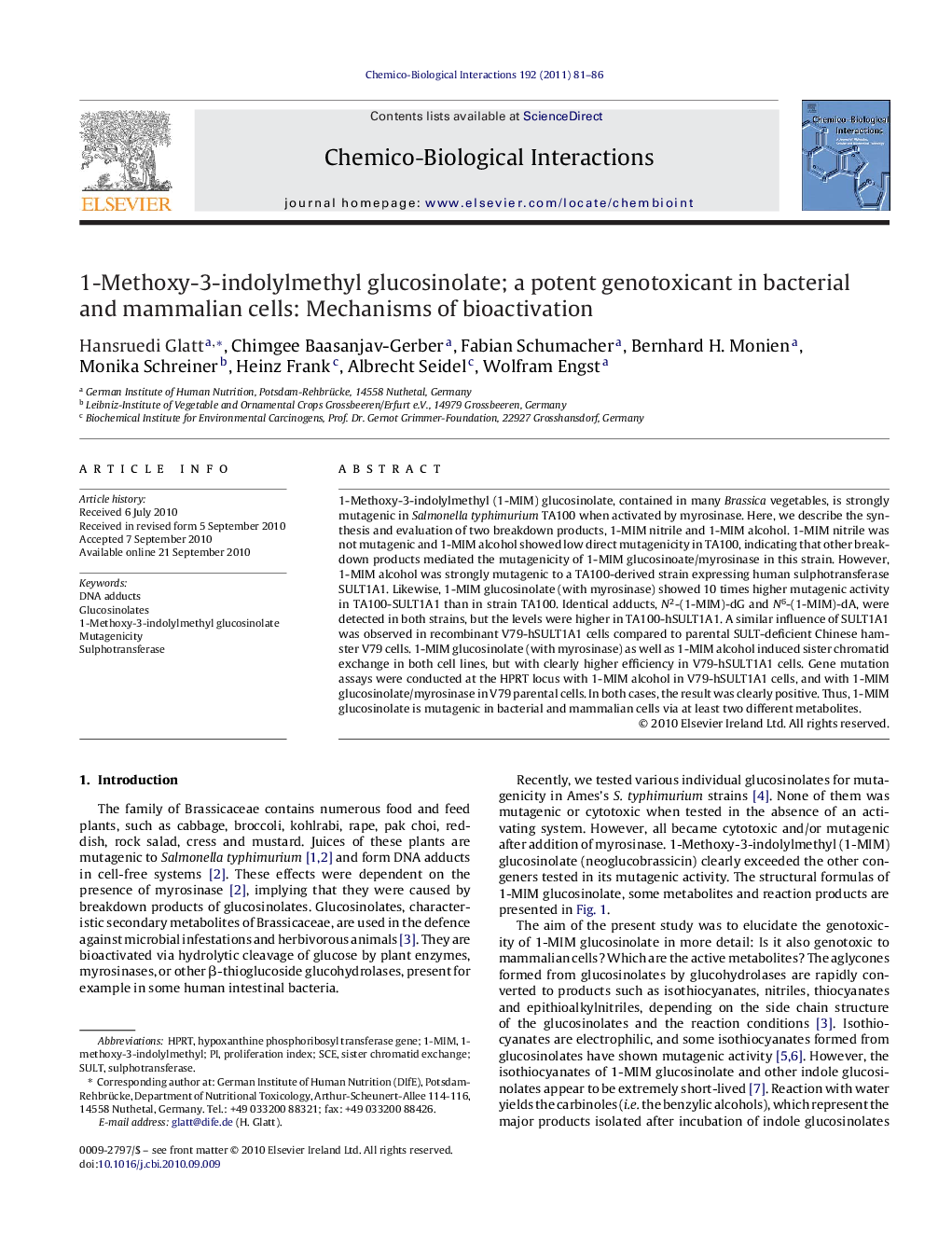| Article ID | Journal | Published Year | Pages | File Type |
|---|---|---|---|---|
| 2581019 | Chemico-Biological Interactions | 2011 | 6 Pages |
Abstract
1-Methoxy-3-indolylmethyl (1-MIM) glucosinolate, contained in many Brassica vegetables, is strongly mutagenic in Salmonella typhimurium TA100 when activated by myrosinase. Here, we describe the synthesis and evaluation of two breakdown products, 1-MIM nitrile and 1-MIM alcohol. 1-MIM nitrile was not mutagenic and 1-MIM alcohol showed low direct mutagenicity in TA100, indicating that other breakdown products mediated the mutagenicity of 1-MIM glucosinoate/myrosinase in this strain. However, 1-MIM alcohol was strongly mutagenic to a TA100-derived strain expressing human sulphotransferase SULT1A1. Likewise, 1-MIM glucosinolate (with myrosinase) showed 10 times higher mutagenic activity in TA100-SULT1A1 than in strain TA100. Identical adducts, N2-(1-MIM)-dG and N6-(1-MIM)-dA, were detected in both strains, but the levels were higher in TA100-hSULT1A1. A similar influence of SULT1A1 was observed in recombinant V79-hSULT1A1 cells compared to parental SULT-deficient Chinese hamster V79 cells. 1-MIM glucosinolate (with myrosinase) as well as 1-MIM alcohol induced sister chromatid exchange in both cell lines, but with clearly higher efficiency in V79-hSULT1A1 cells. Gene mutation assays were conducted at the HPRT locus with 1-MIM alcohol in V79-hSULT1A1 cells, and with 1-MIM glucosinolate/myrosinase in V79 parental cells. In both cases, the result was clearly positive. Thus, 1-MIM glucosinolate is mutagenic in bacterial and mammalian cells via at least two different metabolites.
Keywords
Related Topics
Life Sciences
Environmental Science
Health, Toxicology and Mutagenesis
Authors
Hansruedi Glatt, Chimgee Baasanjav-Gerber, Fabian Schumacher, Bernhard H. Monien, Monika Schreiner, Heinz Frank, Albrecht Seidel, Wolfram Engst,
